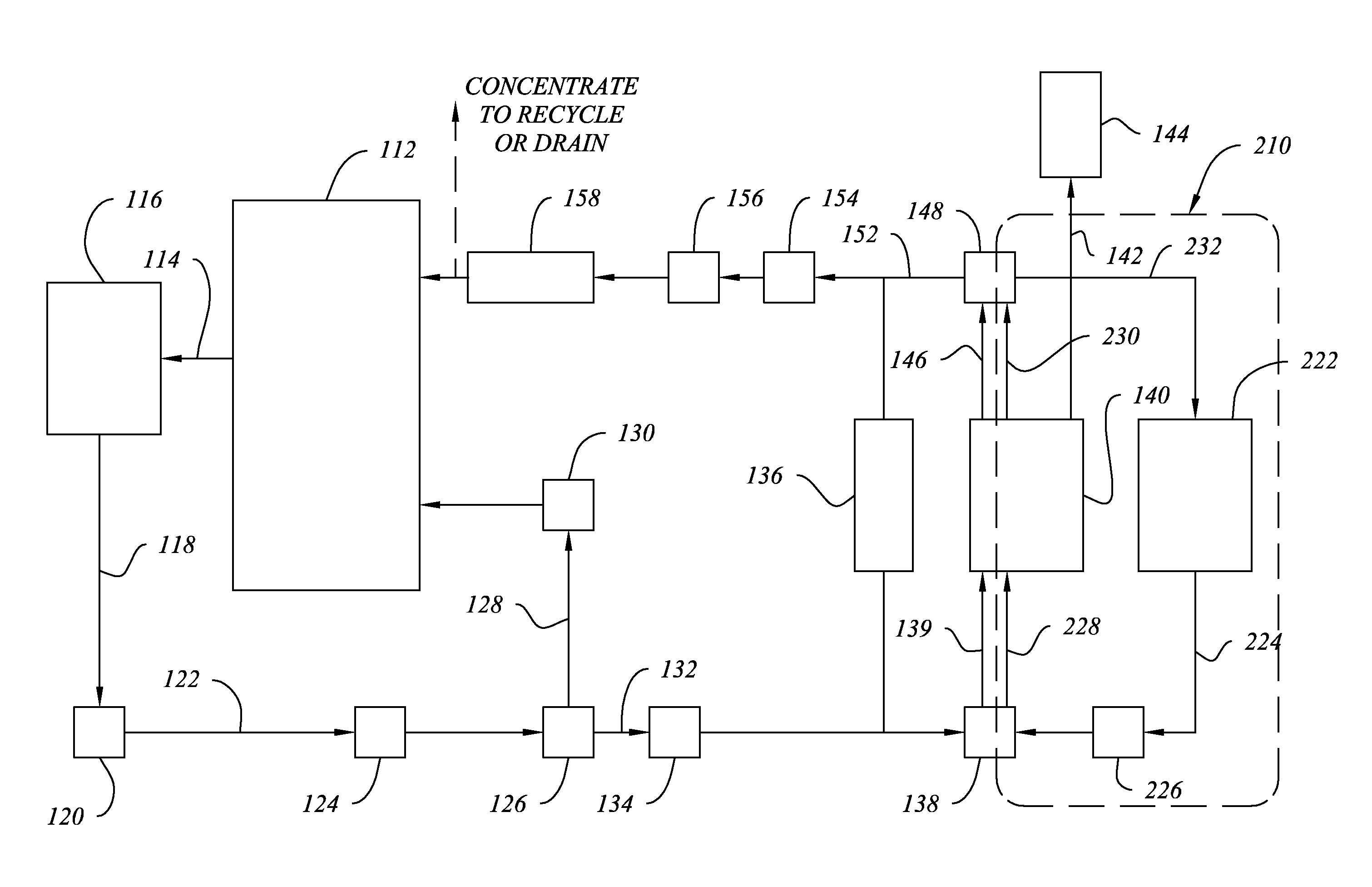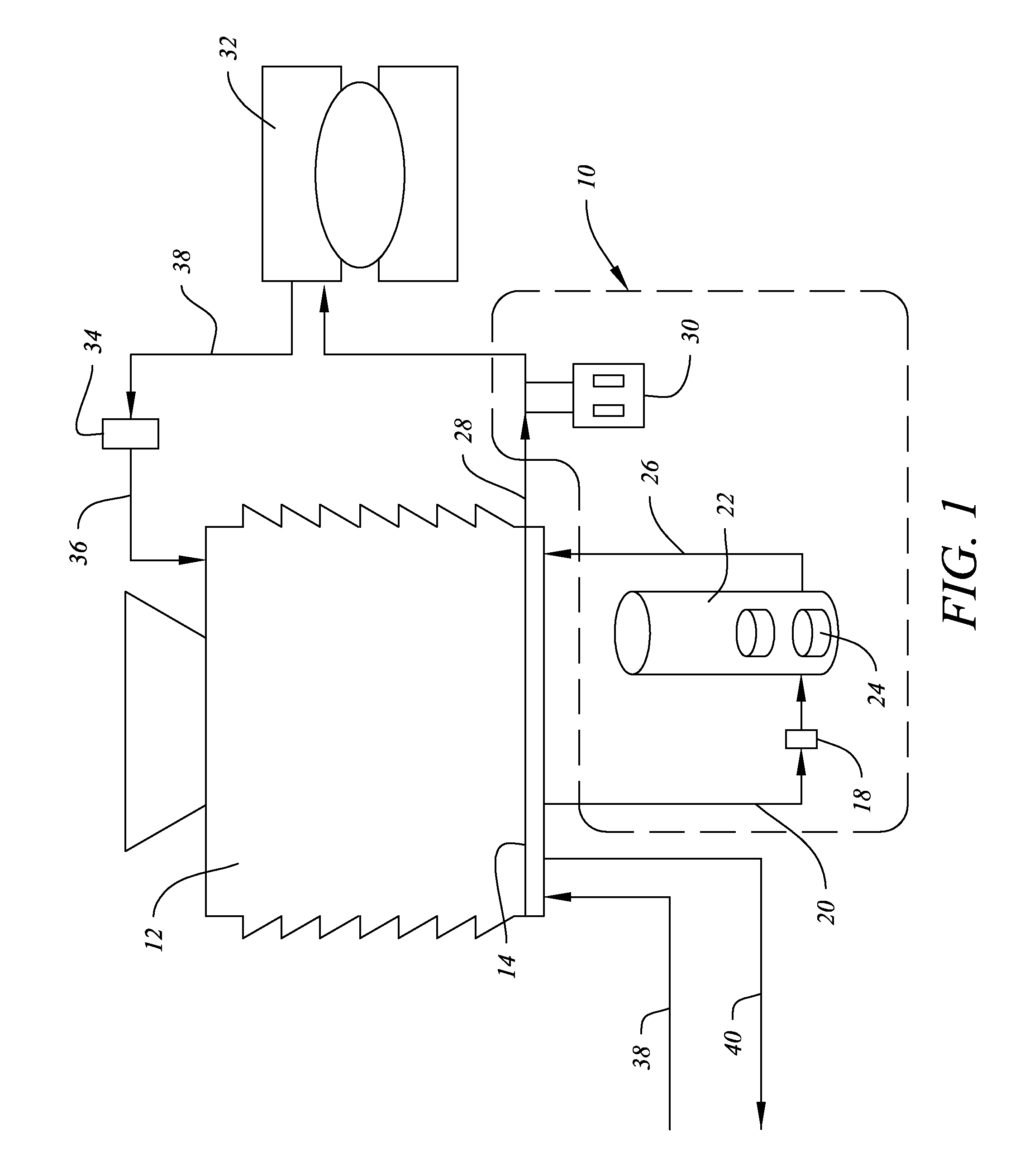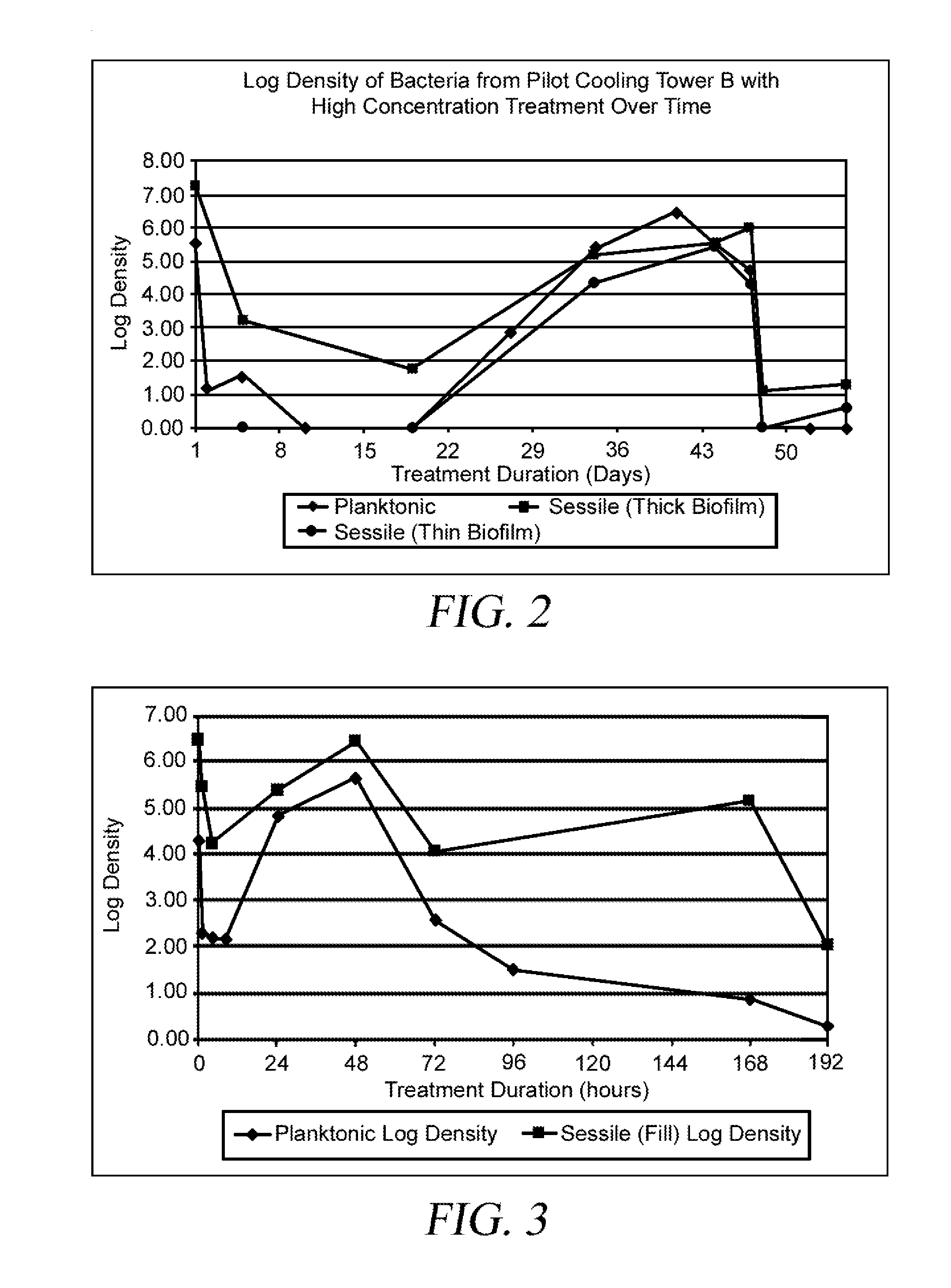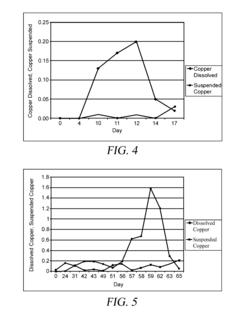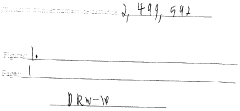Analyzing Muriatic Acid's Effectiveness in Drain Cleaning
JUL 18, 20259 MIN READ
Generate Your Research Report Instantly with AI Agent
Patsnap Eureka helps you evaluate technical feasibility & market potential.
Muriatic Acid Background and Objectives
Muriatic acid, also known as hydrochloric acid, has a long history in industrial and household applications. This powerful chemical compound has been utilized for various purposes, including metal cleaning, pH adjustment, and notably, drain cleaning. The evolution of muriatic acid as a drain cleaning agent can be traced back to the early 20th century when its corrosive properties were first harnessed for removing stubborn clogs in plumbing systems.
The primary objective of this technical research report is to comprehensively analyze the effectiveness of muriatic acid in drain cleaning applications. This investigation aims to evaluate its performance, safety considerations, and potential advantages over alternative drain cleaning methods. By examining the chemical properties and reactions of muriatic acid with common drain obstructions, we seek to provide a clear understanding of its efficacy in resolving plumbing issues.
Throughout the development of drain cleaning technologies, muriatic acid has remained a persistent solution due to its strong acidic nature and ability to dissolve various materials commonly found in drain blockages. However, the use of such a potent chemical also raises concerns regarding safety, environmental impact, and potential damage to plumbing infrastructure. These factors necessitate a thorough examination of muriatic acid's role in modern drain cleaning practices.
The technological landscape of drain cleaning has witnessed significant advancements, with the introduction of enzymatic cleaners, high-pressure water jetting, and mechanical snaking devices. In this context, it is crucial to assess how muriatic acid compares to these alternatives in terms of effectiveness, cost-efficiency, and overall practicality. This analysis will help determine whether muriatic acid remains a viable option in the face of newer, potentially safer technologies.
As we delve into this technical research, we will explore the chemical mechanisms by which muriatic acid interacts with different types of drain obstructions, including organic matter, mineral deposits, and other common clog-causing substances. This investigation will provide insights into the optimal conditions and applications for muriatic acid in drain cleaning, as well as its limitations and potential risks.
Furthermore, this report aims to address the growing concerns surrounding the environmental impact of chemical drain cleaners. By examining the ecological footprint of muriatic acid usage in household and industrial settings, we can better understand its long-term sustainability as a drain cleaning solution. This analysis will contribute to the ongoing dialogue about balancing effective cleaning methods with environmental responsibility.
The primary objective of this technical research report is to comprehensively analyze the effectiveness of muriatic acid in drain cleaning applications. This investigation aims to evaluate its performance, safety considerations, and potential advantages over alternative drain cleaning methods. By examining the chemical properties and reactions of muriatic acid with common drain obstructions, we seek to provide a clear understanding of its efficacy in resolving plumbing issues.
Throughout the development of drain cleaning technologies, muriatic acid has remained a persistent solution due to its strong acidic nature and ability to dissolve various materials commonly found in drain blockages. However, the use of such a potent chemical also raises concerns regarding safety, environmental impact, and potential damage to plumbing infrastructure. These factors necessitate a thorough examination of muriatic acid's role in modern drain cleaning practices.
The technological landscape of drain cleaning has witnessed significant advancements, with the introduction of enzymatic cleaners, high-pressure water jetting, and mechanical snaking devices. In this context, it is crucial to assess how muriatic acid compares to these alternatives in terms of effectiveness, cost-efficiency, and overall practicality. This analysis will help determine whether muriatic acid remains a viable option in the face of newer, potentially safer technologies.
As we delve into this technical research, we will explore the chemical mechanisms by which muriatic acid interacts with different types of drain obstructions, including organic matter, mineral deposits, and other common clog-causing substances. This investigation will provide insights into the optimal conditions and applications for muriatic acid in drain cleaning, as well as its limitations and potential risks.
Furthermore, this report aims to address the growing concerns surrounding the environmental impact of chemical drain cleaners. By examining the ecological footprint of muriatic acid usage in household and industrial settings, we can better understand its long-term sustainability as a drain cleaning solution. This analysis will contribute to the ongoing dialogue about balancing effective cleaning methods with environmental responsibility.
Drain Cleaning Market Analysis
The drain cleaning market has experienced significant growth in recent years, driven by increasing urbanization, aging infrastructure, and growing awareness of hygiene and sanitation. The global drain cleaning equipment market was valued at approximately $2.5 billion in 2020 and is projected to reach $3.8 billion by 2027, growing at a CAGR of around 6.5% during the forecast period.
Residential applications dominate the market, accounting for over 60% of the total market share. This is primarily due to the high frequency of drain clogs in households and the increasing DIY trend among homeowners. Commercial and industrial sectors, including hospitality, healthcare, and manufacturing, also contribute significantly to market demand.
Geographically, North America holds the largest market share, followed by Europe and Asia-Pacific. The United States, in particular, represents a major market due to its well-established plumbing infrastructure and high consumer awareness. Emerging economies in Asia-Pacific, such as China and India, are expected to witness the fastest growth rates owing to rapid urbanization and increasing disposable incomes.
The market is characterized by the presence of both chemical and mechanical drain cleaning solutions. Chemical drain cleaners, including muriatic acid-based products, account for a substantial portion of the market due to their ease of use and effectiveness. However, there is a growing shift towards eco-friendly and less corrosive alternatives, driven by environmental concerns and regulatory pressures.
Key players in the drain cleaning market include Roto-Rooter, Ridgid, General Wire Spring, and Gorlitz Sewer & Drain. These companies are focusing on product innovation, such as developing advanced drain cleaning equipment and safer chemical formulations, to gain a competitive edge.
The COVID-19 pandemic has had a mixed impact on the drain cleaning market. While commercial demand decreased due to lockdowns and reduced business activities, residential demand saw an uptick as people spent more time at home, leading to increased strain on household plumbing systems.
Looking ahead, the market is expected to be driven by technological advancements, such as the integration of IoT and AI in drain cleaning equipment, as well as the development of more environmentally friendly cleaning solutions. The growing emphasis on preventive maintenance in both residential and commercial sectors is also likely to fuel market growth in the coming years.
Residential applications dominate the market, accounting for over 60% of the total market share. This is primarily due to the high frequency of drain clogs in households and the increasing DIY trend among homeowners. Commercial and industrial sectors, including hospitality, healthcare, and manufacturing, also contribute significantly to market demand.
Geographically, North America holds the largest market share, followed by Europe and Asia-Pacific. The United States, in particular, represents a major market due to its well-established plumbing infrastructure and high consumer awareness. Emerging economies in Asia-Pacific, such as China and India, are expected to witness the fastest growth rates owing to rapid urbanization and increasing disposable incomes.
The market is characterized by the presence of both chemical and mechanical drain cleaning solutions. Chemical drain cleaners, including muriatic acid-based products, account for a substantial portion of the market due to their ease of use and effectiveness. However, there is a growing shift towards eco-friendly and less corrosive alternatives, driven by environmental concerns and regulatory pressures.
Key players in the drain cleaning market include Roto-Rooter, Ridgid, General Wire Spring, and Gorlitz Sewer & Drain. These companies are focusing on product innovation, such as developing advanced drain cleaning equipment and safer chemical formulations, to gain a competitive edge.
The COVID-19 pandemic has had a mixed impact on the drain cleaning market. While commercial demand decreased due to lockdowns and reduced business activities, residential demand saw an uptick as people spent more time at home, leading to increased strain on household plumbing systems.
Looking ahead, the market is expected to be driven by technological advancements, such as the integration of IoT and AI in drain cleaning equipment, as well as the development of more environmentally friendly cleaning solutions. The growing emphasis on preventive maintenance in both residential and commercial sectors is also likely to fuel market growth in the coming years.
Muriatic Acid Challenges in Drain Cleaning
Muriatic acid, also known as hydrochloric acid, has been widely used in drain cleaning applications due to its strong corrosive properties. However, its effectiveness in this role is accompanied by several significant challenges that must be carefully considered and addressed.
One of the primary concerns is the safety hazard posed by muriatic acid. Its highly corrosive nature can cause severe burns and respiratory issues if mishandled or improperly used. This necessitates strict safety protocols and protective equipment, which can complicate the drain cleaning process and increase associated costs.
The environmental impact of muriatic acid is another major challenge. When discharged into wastewater systems, it can disrupt the pH balance of water bodies, potentially harming aquatic ecosystems. This environmental concern has led to increased regulatory scrutiny and restrictions on its use in many jurisdictions.
Muriatic acid's corrosive properties, while effective for cleaning, can also damage plumbing systems. Prolonged or frequent use may lead to the deterioration of metal pipes, seals, and fixtures, potentially causing leaks or system failures. This risk is particularly high in older plumbing systems or those with pre-existing weaknesses.
The acid's reactivity with certain materials presents another challenge. It can generate toxic fumes when coming into contact with bleach or other common household chemicals, creating dangerous situations for users and requiring careful control of the cleaning environment.
Effectiveness variability is a significant issue in drain cleaning applications. While muriatic acid is highly effective against mineral deposits and some organic matter, it may be less effective against certain types of clogs, particularly those composed of grease or hair. This limitation can lead to incomplete cleaning results and the need for alternative or additional cleaning methods.
Storage and handling of muriatic acid pose logistical challenges. The acid requires specialized containment to prevent leaks and spills, and its transportation is subject to strict regulations. These factors can increase operational complexity and costs for drain cleaning service providers.
The potential for overuse or misuse of muriatic acid in drain cleaning is a persistent concern. Inexperienced users may apply excessive amounts or leave the acid in contact with pipes for too long, exacerbating the risks of damage to plumbing systems and environmental contamination.
As awareness of these challenges grows, there is an increasing demand for safer and more environmentally friendly alternatives to muriatic acid in drain cleaning applications. This shift is driving research and development efforts towards new cleaning solutions that can match the effectiveness of muriatic acid while mitigating its associated risks and drawbacks.
One of the primary concerns is the safety hazard posed by muriatic acid. Its highly corrosive nature can cause severe burns and respiratory issues if mishandled or improperly used. This necessitates strict safety protocols and protective equipment, which can complicate the drain cleaning process and increase associated costs.
The environmental impact of muriatic acid is another major challenge. When discharged into wastewater systems, it can disrupt the pH balance of water bodies, potentially harming aquatic ecosystems. This environmental concern has led to increased regulatory scrutiny and restrictions on its use in many jurisdictions.
Muriatic acid's corrosive properties, while effective for cleaning, can also damage plumbing systems. Prolonged or frequent use may lead to the deterioration of metal pipes, seals, and fixtures, potentially causing leaks or system failures. This risk is particularly high in older plumbing systems or those with pre-existing weaknesses.
The acid's reactivity with certain materials presents another challenge. It can generate toxic fumes when coming into contact with bleach or other common household chemicals, creating dangerous situations for users and requiring careful control of the cleaning environment.
Effectiveness variability is a significant issue in drain cleaning applications. While muriatic acid is highly effective against mineral deposits and some organic matter, it may be less effective against certain types of clogs, particularly those composed of grease or hair. This limitation can lead to incomplete cleaning results and the need for alternative or additional cleaning methods.
Storage and handling of muriatic acid pose logistical challenges. The acid requires specialized containment to prevent leaks and spills, and its transportation is subject to strict regulations. These factors can increase operational complexity and costs for drain cleaning service providers.
The potential for overuse or misuse of muriatic acid in drain cleaning is a persistent concern. Inexperienced users may apply excessive amounts or leave the acid in contact with pipes for too long, exacerbating the risks of damage to plumbing systems and environmental contamination.
As awareness of these challenges grows, there is an increasing demand for safer and more environmentally friendly alternatives to muriatic acid in drain cleaning applications. This shift is driving research and development efforts towards new cleaning solutions that can match the effectiveness of muriatic acid while mitigating its associated risks and drawbacks.
Current Muriatic Acid Drain Cleaning Solutions
01 Cleaning and etching applications
Muriatic acid, also known as hydrochloric acid, is highly effective in cleaning and etching various surfaces. It is commonly used for removing rust, scale, and mineral deposits from metal surfaces, concrete, and masonry. Its strong acidic properties make it suitable for preparing surfaces for painting or further treatment.- Cleaning and etching applications: Muriatic acid, also known as hydrochloric acid, is highly effective in cleaning and etching various surfaces. It is commonly used for removing rust, scale, and mineral deposits from metal surfaces, concrete, and masonry. Its strong acidic properties make it suitable for preparing surfaces for painting or further treatment.
- pH adjustment in industrial processes: Muriatic acid is widely used in industrial processes for pH adjustment. Its effectiveness in lowering pH levels makes it valuable in water treatment, chemical manufacturing, and food processing industries. It helps maintain optimal pH conditions for various reactions and processes.
- Swimming pool maintenance: In swimming pool maintenance, muriatic acid is effective for balancing water chemistry. It helps lower pH and total alkalinity levels, preventing scale formation and ensuring proper sanitizer effectiveness. Its use contributes to maintaining clear and safe pool water.
- Metal treatment and processing: Muriatic acid is effective in various metal treatment processes, including pickling, metal cleaning, and surface preparation. It removes oxides and impurities from metal surfaces, enhancing their properties for further processing or coating applications.
- Environmental remediation: In environmental applications, muriatic acid is effective for soil and groundwater remediation. It can be used to neutralize alkaline contaminants, adjust pH in treatment systems, and assist in the removal of certain pollutants from contaminated sites.
02 pH adjustment in industrial processes
Muriatic acid is widely used in industrial processes for pH adjustment. Its effectiveness in lowering pH makes it valuable in water treatment, chemical manufacturing, and food processing industries. It can help optimize reaction conditions and maintain desired acidity levels in various applications.Expand Specific Solutions03 Metal surface treatment
The effectiveness of muriatic acid in metal surface treatment is well-established. It is used for pickling and descaling metal surfaces, particularly in the steel industry. The acid removes oxides and impurities from metal surfaces, preparing them for further processing or coating applications.Expand Specific Solutions04 Swimming pool maintenance
Muriatic acid is effective in maintaining proper pH levels in swimming pools. It helps to balance the water chemistry, prevent scale formation, and ensure the effectiveness of chlorine-based disinfectants. Regular use of muriatic acid can improve water clarity and overall pool maintenance.Expand Specific Solutions05 Pharmaceutical and chemical synthesis
In pharmaceutical and chemical industries, muriatic acid's effectiveness is utilized in various synthesis processes. It serves as a reagent or catalyst in the production of drugs, dyes, and other chemical compounds. Its strong acidic properties make it valuable in acid-base reactions and as a proton donor in organic synthesis.Expand Specific Solutions
Key Players in Drain Cleaning Industry
The market for muriatic acid in drain cleaning is in a mature stage, with established players and well-defined applications. The global drain cleaner market size is estimated to be around $2 billion, with steady growth projected. Technologically, the use of muriatic acid for drain cleaning is well-established, with companies like JohnsonDiversey, Henkel, and Ecolab leading in product development and distribution. These firms, along with The Clorox Co. and Kemira Oyj, have advanced formulations that balance effectiveness and safety. While innovation continues, particularly in eco-friendly alternatives, the core technology remains relatively stable, with improvements focusing on safety features and targeted applications.
JohnsonDiversey Co. Ltd.
Technical Solution: JohnsonDiversey has created a multi-action muriatic acid drain cleaning system designed for commercial and institutional use. Their solution combines traditional acid-based cleaning with enzymatic treatments to address a wide range of drain blockages. The product utilizes a time-release capsule technology that gradually dispenses both the acid and enzymes, providing sustained cleaning action over several hours[9]. JohnsonDiversey has also incorporated a bio-based foaming agent that expands within the pipes, ensuring complete coverage of the internal surfaces. The foam also serves as a visual indicator of the product's activation and helps to lift debris for more effective removal[10].
Strengths: Comprehensive cleaning action combining acid and enzymes, extended release for prolonged effectiveness, visual foam indicator. Weaknesses: May require more complex application procedures, potentially higher cost due to advanced formulation.
Henkel AG & Co. KGaA
Technical Solution: Henkel has developed an advanced muriatic acid-based drain cleaning solution that incorporates a unique gel formulation. This gel technology allows for better adhesion to pipe walls, increasing contact time and effectiveness in dissolving organic blockages. The product also includes corrosion inhibitors to protect metal pipes and fittings. Henkel's solution uses a controlled-release mechanism, gradually dispensing the active ingredients to maintain efficacy over an extended period[1]. The company has also implemented safety features such as child-resistant packaging and vapor reduction additives to minimize harmful fumes during use[3].
Strengths: Enhanced effectiveness due to gel formulation, longer contact time, and corrosion protection. Improved safety features for residential use. Weaknesses: May be more expensive than traditional liquid formulations, potential environmental concerns with chemical runoff.
Muriatic Acid Drain Cleaning Innovations
Composition, System, and Method for Treating Water Systems
PatentActiveUS20160354727A1
Innovation
- A chemical treatment composition and method using citric acid, sodium citrate, and tetradecyltrimethyl ammonium bromide, with optional corrosion inhibitors and biocides, is applied in both flowing and non-flowing systems, where the treatment product is dissolved in situ, utilizing a side stream and filtration to remove biofilm agglomerates and prevent corrosion, reducing the need for large volumes of liquid chemicals and minimizing environmental impact.
Process for industrial chemical cleaning
PatentInactiveCA2499592A1
Innovation
- The use of methanesulfonic acid (MSA) as a chemical cleaning agent, applied in solutions ranging from 2% to 20% by weight in water, which offers strong acid properties with improved compatibility and safety features, including reduced corrosion and environmental impact.
Environmental Impact of Muriatic Acid Use
The use of muriatic acid in drain cleaning poses significant environmental concerns that warrant careful consideration. When introduced into wastewater systems, muriatic acid can have far-reaching effects on aquatic ecosystems and water treatment processes. The highly corrosive nature of this acid can damage pipes and sewage infrastructure, potentially leading to leaks and contamination of surrounding soil and groundwater.
In aquatic environments, muriatic acid can cause severe pH imbalances, adversely affecting fish, plants, and microorganisms. Even small quantities of the acid can disrupt the delicate ecological balance of rivers, lakes, and coastal areas. The altered pH levels can lead to the death of aquatic life and the destruction of habitats, with long-lasting consequences for biodiversity.
Furthermore, the presence of muriatic acid in wastewater can interfere with the biological processes used in water treatment facilities. The acid can kill beneficial bacteria essential for breaking down organic matter, reducing the efficiency of treatment plants and potentially releasing inadequately treated water back into the environment.
The production and transportation of muriatic acid also contribute to its environmental impact. Manufacturing processes often involve the emission of chlorine gas and other pollutants, contributing to air quality issues and potential health risks for nearby communities. Transportation accidents or spills can result in localized environmental disasters, requiring costly cleanup efforts and posing immediate threats to wildlife and vegetation.
Proper disposal of muriatic acid is crucial but often challenging. Improper disposal, such as pouring it down drains or onto the ground, can lead to soil contamination and groundwater pollution. This can have long-term effects on soil fertility and the safety of drinking water sources.
In response to these environmental concerns, there is a growing push for more sustainable alternatives in drain cleaning. Enzymatic cleaners, mechanical methods, and less harmful chemical solutions are being developed and promoted as eco-friendly options. These alternatives aim to provide effective drain cleaning while minimizing the negative environmental impact associated with muriatic acid use.
Regulatory bodies in many countries have implemented strict guidelines for the use and disposal of muriatic acid, recognizing its potential for environmental harm. These regulations often require proper handling, storage, and disposal protocols to mitigate risks. However, enforcement challenges and lack of awareness among some users continue to pose environmental threats.
As awareness of environmental issues grows, both consumers and industries are increasingly seeking ways to reduce their reliance on harsh chemicals like muriatic acid. This shift is driving innovation in green chemistry and sustainable cleaning technologies, aiming to balance effective drain cleaning with environmental stewardship.
In aquatic environments, muriatic acid can cause severe pH imbalances, adversely affecting fish, plants, and microorganisms. Even small quantities of the acid can disrupt the delicate ecological balance of rivers, lakes, and coastal areas. The altered pH levels can lead to the death of aquatic life and the destruction of habitats, with long-lasting consequences for biodiversity.
Furthermore, the presence of muriatic acid in wastewater can interfere with the biological processes used in water treatment facilities. The acid can kill beneficial bacteria essential for breaking down organic matter, reducing the efficiency of treatment plants and potentially releasing inadequately treated water back into the environment.
The production and transportation of muriatic acid also contribute to its environmental impact. Manufacturing processes often involve the emission of chlorine gas and other pollutants, contributing to air quality issues and potential health risks for nearby communities. Transportation accidents or spills can result in localized environmental disasters, requiring costly cleanup efforts and posing immediate threats to wildlife and vegetation.
Proper disposal of muriatic acid is crucial but often challenging. Improper disposal, such as pouring it down drains or onto the ground, can lead to soil contamination and groundwater pollution. This can have long-term effects on soil fertility and the safety of drinking water sources.
In response to these environmental concerns, there is a growing push for more sustainable alternatives in drain cleaning. Enzymatic cleaners, mechanical methods, and less harmful chemical solutions are being developed and promoted as eco-friendly options. These alternatives aim to provide effective drain cleaning while minimizing the negative environmental impact associated with muriatic acid use.
Regulatory bodies in many countries have implemented strict guidelines for the use and disposal of muriatic acid, recognizing its potential for environmental harm. These regulations often require proper handling, storage, and disposal protocols to mitigate risks. However, enforcement challenges and lack of awareness among some users continue to pose environmental threats.
As awareness of environmental issues grows, both consumers and industries are increasingly seeking ways to reduce their reliance on harsh chemicals like muriatic acid. This shift is driving innovation in green chemistry and sustainable cleaning technologies, aiming to balance effective drain cleaning with environmental stewardship.
Safety Regulations for Chemical Drain Cleaners
The safety regulations for chemical drain cleaners, including muriatic acid, are crucial for protecting both consumers and professionals who use these products. In the United States, the Consumer Product Safety Commission (CPSC) and the Occupational Safety and Health Administration (OSHA) play key roles in establishing and enforcing safety standards for chemical drain cleaners.
The Federal Hazardous Substances Act (FHSA) requires that hazardous household products, including drain cleaners, bear warning labels that alert consumers to the potential hazards and provide instructions for safe use and storage. These labels must include signal words such as "DANGER," "WARNING," or "CAUTION," depending on the level of hazard, as well as specific hazard statements and precautionary measures.
For muriatic acid and other corrosive drain cleaners, manufacturers must comply with the Poison Prevention Packaging Act (PPPA), which mandates child-resistant packaging to prevent accidental ingestion by children. This regulation has significantly reduced the number of chemical-related injuries in households.
In the workplace, OSHA's Hazard Communication Standard requires employers to provide information about the hazards of chemicals used in the workplace, including drain cleaners. This includes maintaining Safety Data Sheets (SDS) for all hazardous chemicals and ensuring proper labeling of containers.
Specific to muriatic acid, OSHA has established Permissible Exposure Limits (PELs) to protect workers from harmful exposure. The current PEL for hydrogen chloride (the gas form of muriatic acid) is 5 parts per million (ppm) as a ceiling limit, meaning this concentration should not be exceeded at any time during the workday.
Environmental regulations also impact the use and disposal of chemical drain cleaners. The Environmental Protection Agency (EPA) regulates the disposal of hazardous waste under the Resource Conservation and Recovery Act (RCRA). Many chemical drain cleaners, including those containing muriatic acid, are considered hazardous waste and must be disposed of according to specific guidelines to prevent environmental contamination.
At the state and local levels, additional regulations may apply. For example, some jurisdictions have implemented more stringent requirements for the sale and use of corrosive drain cleaners, including age restrictions for purchase or mandatory safety training for professional users.
Internationally, regulations vary, but many countries follow guidelines similar to those in the United States. The Globally Harmonized System of Classification and Labelling of Chemicals (GHS) provides a standardized approach to chemical hazard classification and communication, which has been adopted by many countries to improve safety across borders.
The Federal Hazardous Substances Act (FHSA) requires that hazardous household products, including drain cleaners, bear warning labels that alert consumers to the potential hazards and provide instructions for safe use and storage. These labels must include signal words such as "DANGER," "WARNING," or "CAUTION," depending on the level of hazard, as well as specific hazard statements and precautionary measures.
For muriatic acid and other corrosive drain cleaners, manufacturers must comply with the Poison Prevention Packaging Act (PPPA), which mandates child-resistant packaging to prevent accidental ingestion by children. This regulation has significantly reduced the number of chemical-related injuries in households.
In the workplace, OSHA's Hazard Communication Standard requires employers to provide information about the hazards of chemicals used in the workplace, including drain cleaners. This includes maintaining Safety Data Sheets (SDS) for all hazardous chemicals and ensuring proper labeling of containers.
Specific to muriatic acid, OSHA has established Permissible Exposure Limits (PELs) to protect workers from harmful exposure. The current PEL for hydrogen chloride (the gas form of muriatic acid) is 5 parts per million (ppm) as a ceiling limit, meaning this concentration should not be exceeded at any time during the workday.
Environmental regulations also impact the use and disposal of chemical drain cleaners. The Environmental Protection Agency (EPA) regulates the disposal of hazardous waste under the Resource Conservation and Recovery Act (RCRA). Many chemical drain cleaners, including those containing muriatic acid, are considered hazardous waste and must be disposed of according to specific guidelines to prevent environmental contamination.
At the state and local levels, additional regulations may apply. For example, some jurisdictions have implemented more stringent requirements for the sale and use of corrosive drain cleaners, including age restrictions for purchase or mandatory safety training for professional users.
Internationally, regulations vary, but many countries follow guidelines similar to those in the United States. The Globally Harmonized System of Classification and Labelling of Chemicals (GHS) provides a standardized approach to chemical hazard classification and communication, which has been adopted by many countries to improve safety across borders.
Unlock deeper insights with Patsnap Eureka Quick Research — get a full tech report to explore trends and direct your research. Try now!
Generate Your Research Report Instantly with AI Agent
Supercharge your innovation with Patsnap Eureka AI Agent Platform!
